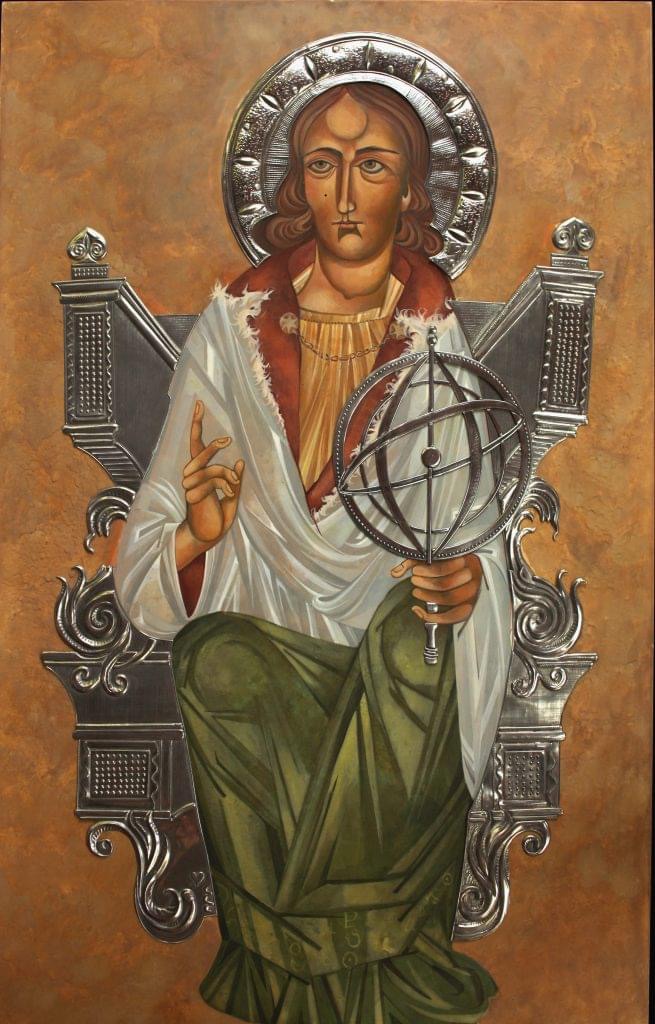
Today the church remembers a star-gazer and mathematician whose mother called him Mikolaj Kopernik, but who you know as: Saint Copernicus, Revolutionary Thinker and Mapper of Worlds.
Born at the tail-end of the 15th Century in Poland, Saint Copernicus was privileged to have a successful copper merchant as a father. Yet he would taste bitterness before he hit his teens, as his parents died when he was still young and he was sent to live with his minister uncle.
In 1491 he entered the University of Krakow and developed a keen interest in astronomy. He would go on to study at the University of Bologna and spend hours reading and discussing Plato while he waited for familial strings to orchestrate an appointment as a canon of Frauenburg Cathedral (where he could live with some financial security).
This eventually happened, but Saint Copernicus had become an addict of education and refused to stay there.
Feeling like he didn’t yet know enough to be enough, he went on to study law and medicine at the University of Padua and in 1503 graduated with a degree of Doctor of Canon Law at the University of Ferrara. He settled back into Frauenburg and began to serve the poor and his medical knowledge.
All the while Saint Copernicus continued to look at the stars with fascination and profundity. He had given up on the reigning Ptolemaic geocentric model of the universe and thought there was something better to describe what was going on in the vast, crowded emptiness that was colloquially known as “space.” The geocentric model of the universe was increasingly unintelligible, even as theologians and scientists tried to defend it, and this moved Saint Copernicus to ponder an ancient idea that was much simpler and explained things a bit clearer: heliocentricity.
He started to run his own experiments with his crude instruments and though he became convinced of his own idea, convincing others would be dangerous and difficult.
In 1530 he published a private document, shared mostly amongst friends, that sufficiently argued his theory. His friends, being good friends, told him that he should publish it immediately. Copernicus, though, was hesitant. Heresies were not exactly embraced by the church nor society. Look what happened to Luther!
After years and years of hemming and hawing, Copernicus eventually sent one of his pupils, a Georg Joachim Rhaticus, to head to Nuremberg to get heliocentricity in mass publication. His thoughts were published with an unauthorized preface by Lutheran pastor Andreas Osiander where Osiander tries to soften the theological and scientific blow of the work by qualifying it, saying that a stationary sun “is only a convenient and simple way to describe the universe.”
As Copernicus lay on his death bed with only a few hours of breath left in his body he was brought his published work, The Revolution of the Heavenly Bodies, and he died without knowing the universe-shattering implications his models would have on the world.
His book was quickly banned, despite its truth (looking at you Florida and Tennessee) until 1758, and is now considered the prevailing model for understanding the movements of the observable heavenly bodies.
Saint Copernicus was not an especially devout Christian. In fact, it’s pretty clear he thought his ideas put him outside most church circles. Yet his ideas would eventually force the church to become more humble in the face of science, a lesson the church continues to need to learn. If God has given humanity brains to delve into the mysteries of the universe, our reluctance to do so just because we might have to reorient our thoughts is unfaithful to a creator who would give us such capabilities.
Saint Copernicus is a reminder for me, and should be for the whole church, that when presented with better evidence and better understanding, turning a blind eye to new knowledge is not only chosen ignorance, it’s unfaithful, by God.
-historical bits from Pfatteicher’s New Book of Festivals and Commemorations
-icon written by the fine artists at San Miguel Icons (sanmiguelicons.com)
